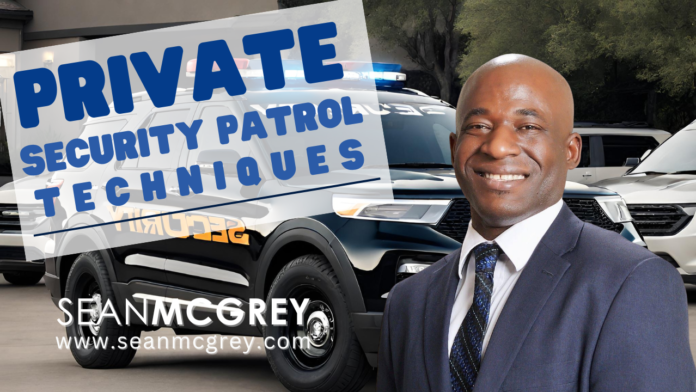As a seasoned private security professional, conducting effective patrols is a cornerstone of your role. Whether it’s patrolling inside and outside a client’s property or mobile patrolling, a strategic approach is crucial. This guide will provide you with a comprehensive overview of how to conduct patrols efficiently, drawing from years of experience in the field.
Inside Property Patrols
- Familiarize Yourself with the LayoutBefore commencing a patrol, take the time to thoroughly familiarize yourself with the layout of the property. This includes knowing all entry and exit points, critical infrastructure locations, and any potential blind spots.
- Establish CheckpointsCreate a systematic approach by establishing checkpoints throughout the property. These checkpoints should be strategically placed to ensure comprehensive coverage.
- Utilize TechnologyLeverage modern technology to enhance your patrols. Security cameras, motion sensors, and access control systems can provide valuable support in monitoring and securing the premises.
- Maintain a PresenceVisibility is a powerful deterrent. Make it known that you are on patrol by wearing a uniform with visible identification. This presence alone can dissuade potential intruders.
- Regularly Document ActivitiesKeep a detailed log of your patrols. Document any irregularities, security breaches, or suspicious activities. This documentation can be crucial in the event of an incident or for future reference.
Outside Property Patrols
- Perimeter ChecksBegin your patrol with a thorough check of the property’s perimeter. Look for any signs of forced entry, tampering, or suspicious activity.
- Landscaping and LightingEnsure that landscaping does not provide hiding spots for potential intruders. Adequate lighting is also crucial in deterring criminal activity.
- Secure Entry PointsVerify that all gates, doors, and windows are properly secured. This includes checking for any signs of tampering or damage.
- Emergency Response PreparationFamiliarize yourself with the location of emergency exits, fire extinguishers, and other safety equipment. This knowledge could be vital in a crisis situation.
Mobile Patrols
- Plan Your RouteBefore embarking on a mobile patrol, plan your route to maximize coverage. Consider high-risk areas and any recent security concerns.
- Randomize PatternsAvoid establishing predictable patterns. Vary your patrol routes, times, and methods to keep potential threats off balance.
- Maintain CommunicationStay in constant communication with your base of operations. Use two-way radios or other communication devices to relay updates and request assistance if needed.
- Stay AlertWhile on a mobile patrol, maintain a high level of situational awareness. Pay attention to your surroundings and be prepared to respond quickly to any emerging threats.
Resources in California and Los Angeles County
- California Association of Licensed Security Agencies, Guards, and Associates (CALSAGA) – Website CALSAGA provides valuable resources, training, and networking opportunities for private security professionals in California.
- Los Angeles County Police Chiefs’ Association (LACPCA) – Website LACPCA offers a platform for collaboration and information sharing among law enforcement agencies in Los Angeles County.
Conducting patrols is essential for any private security professional. By following these comprehensive guidelines and utilizing the provided resources, you’ll be better equipped to safeguard your client’s property effectively. Remember, vigilance, strategic planning, and continuous training are the keys to success in this critical aspect of your role.





